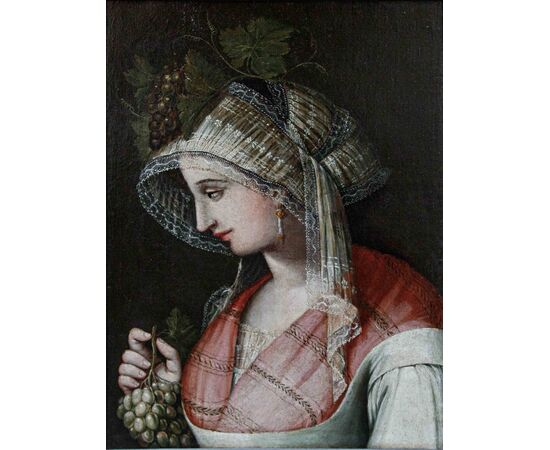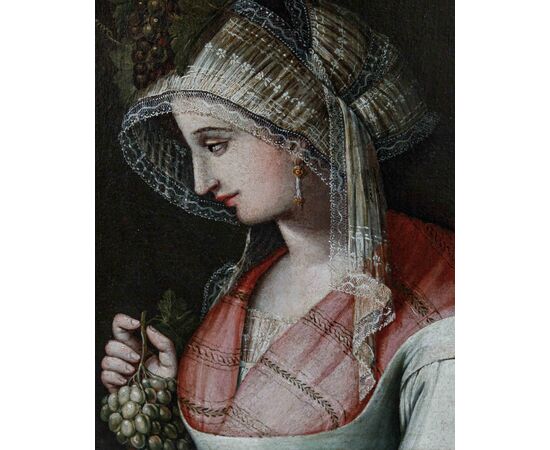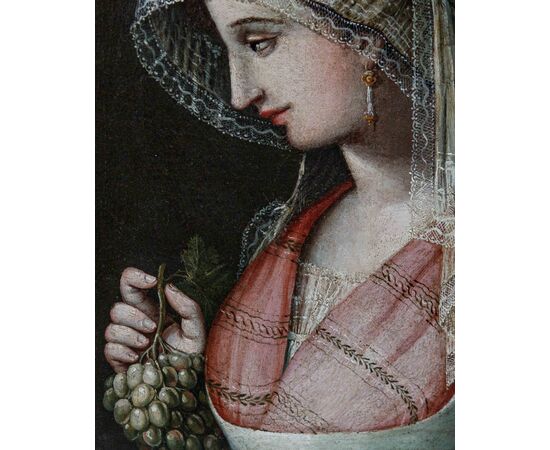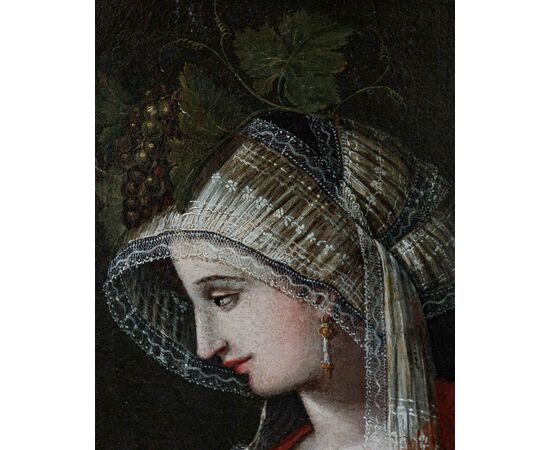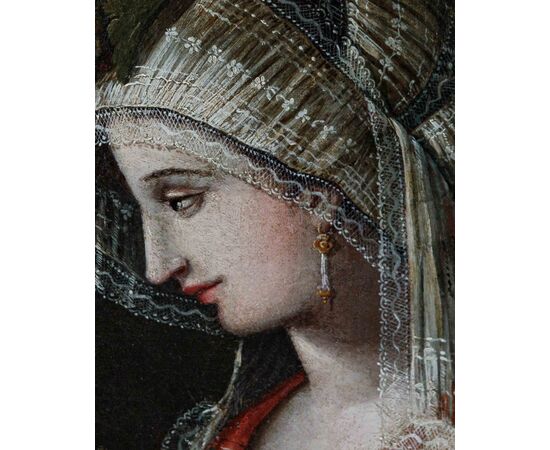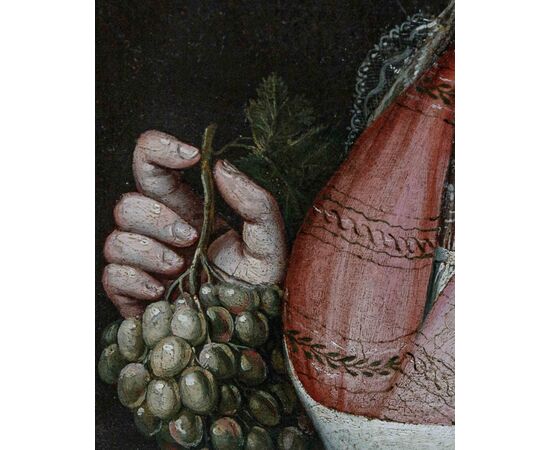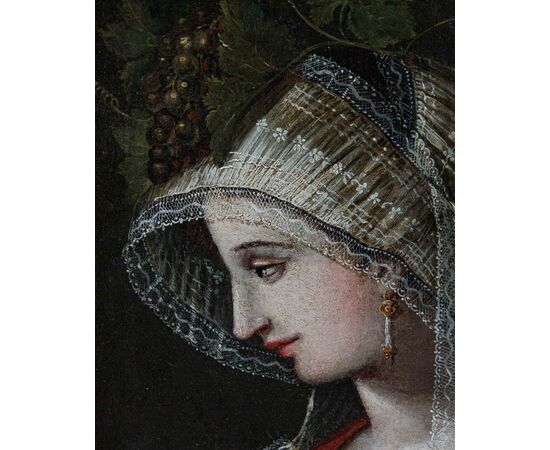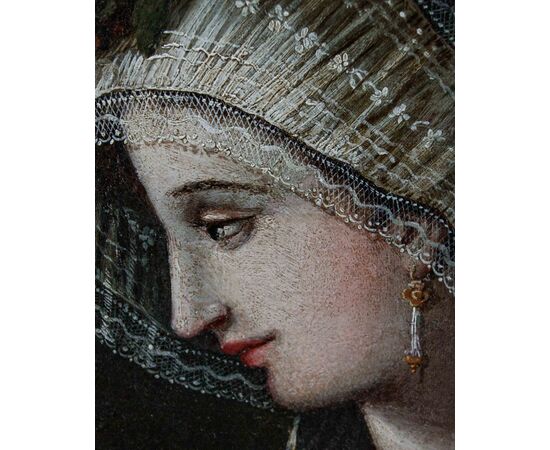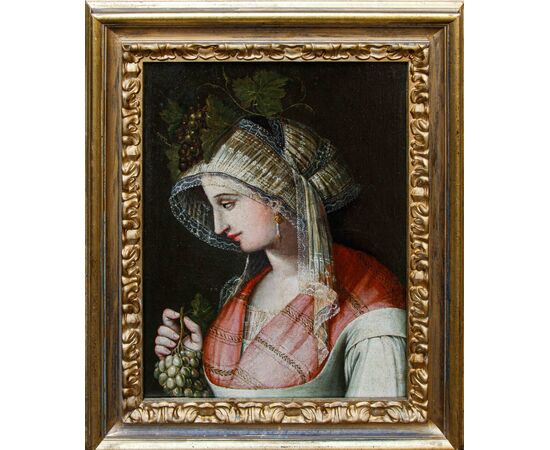17th century, Allegory of Autumn
17th century
Allegory of Autumn
Oil on canvas, 48 x 53 cm
With frame, 68 x 53 cm
Attributable to the hand of an artist ascribable to the 17th century, the oil on canvas under examination represents the personification of the Allegory of Autumn, embodied by a young woman portrayed in profile.
The woman, with sweet and delicate physiognomic features of the face, is dressed according to the seventeenth-century peasant costume, which consisted of a long tunic made with a poor, unpretentious fabric, embellished in this case by a bodice with very simple decorations and a very light headdress with lace embroidery, which hid the underlying hairstyle; to ennoble the character in its allegorical meaning, the artist has also chosen to adorn her with dangling earrings of great richness and refinement. The half-length portrait was ideal for representing the character as a whole, since, without dwelling exclusively on the face, it allowed attention to be focused also on the way of dressing, on gestures and posture. As often happened in portraiture, moreover, the silhouette of the protagonist emerges with all the glow of her diaphanous skin from the dark background of the painting, a stratagem that allowed to enhance the shape of the main subject, concentrating all the viewer's attention on it.
With her right hand the woman delicately holds a bunch of white Pizzutella grapes which, together with the vine shoots she wears on her head, clearly allude to the moment of the harvest, an agricultural practice that took place starting from the month of September, in what the Romans called mensis vindemialis. Contrary to the idea of the collective imagination that framed autumn as the season of decay after the heat brought by summer, the author of the painting wants us to grasp here how it is, instead, a period of rebirth, where everything is reinvigorated and the harvests and vintages, typical of the season, bring harvest and abundance in view of winter.
The Allegories of the seasons was a particularly recurring theme in the history of art already starting from Ancient Rome, then widely taken up starting from the 16th - 17th century. In particular, that of the Allegory of Autumn was a subject in which the greatest artists of the time tried their hand, starting from Francesco del Cossa from Ferrara (1430 - 1478), to the Renaissance Botticelli (1445 - 1510) and his workshop, from Giuseppe Arcimboldo from Milan (1526 - 1593) to Angelo Caroselli from Rome (1585 - 1652), a follower of Caravaggio's naturalism. A common point of all the depictions is the presence of vine shoots and bunches of grapes, for which the artist in question seems to look precisely at the intricate "composite heads" of fruit and vegetables typical of Arcimboldo

